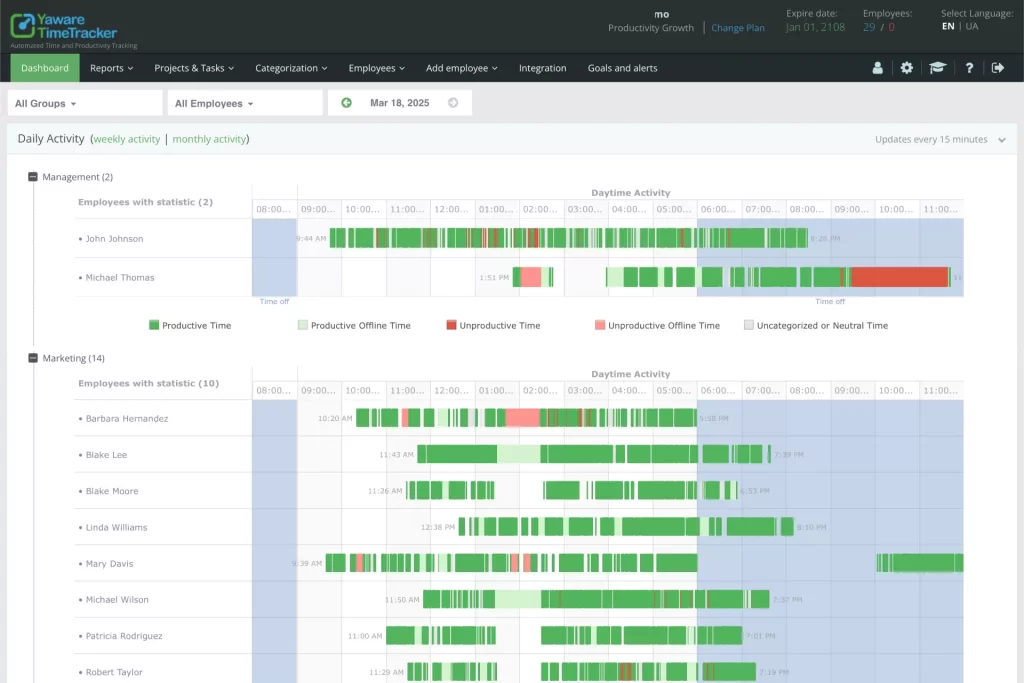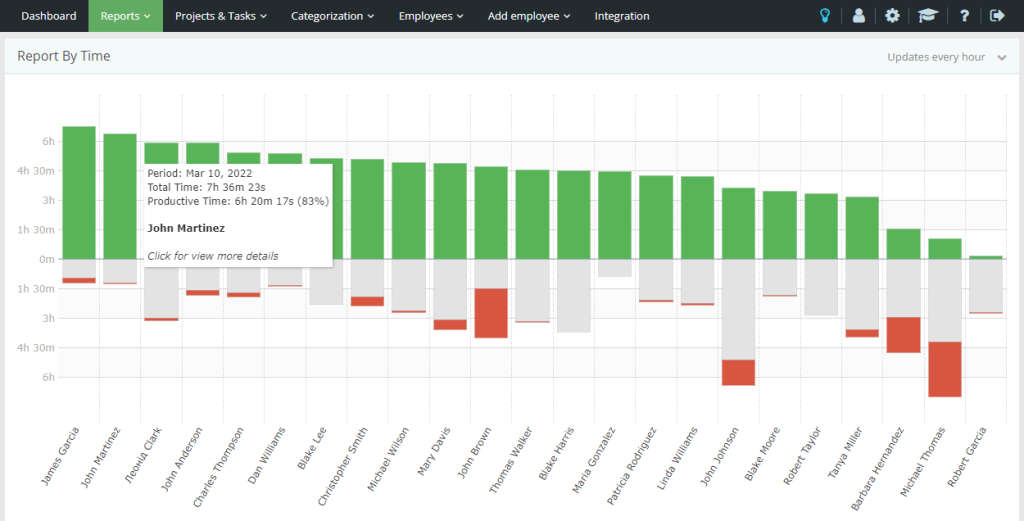Many teams feel overloaded, but the real issue isn’t always the amount of work — it’s how that work flows. Without clear visibility into time usage, even the best teams can become inefficient. Automated time tracking allows managers to decode how work happens and adjust workflows based on real data, not guesswork.
How can automated time tracking improve team workflows?
By analyzing productivity data in real time, businesses can identify delays, automate repetitive tasks, and make smarter decisions that enhance team performance.
Relying on assumptions or outdated reports often leads to overcommitment, project delays, and employee burnout. With access to accurate time reporting software, leaders can make informed decisions and keep teams on track without micromanaging.
Why Workflow Optimization Needs Real-Time Time Data
Optimizing workflows starts with understanding where time is actually going. Automated time tracking eliminates manual input errors and provides continuous insights into employee activity. This enables managers to see what’s working, what’s slowing teams down, and where to intervene.

Using time reporting software, businesses can shift from reactive to proactive management — adjusting workloads, streamlining communication, and ensuring the right people are focused on the right tasks at the right time.
Core Benefits of Work Process Automation
Automating parts of the work process doesn’t remove human input — it removes friction. From time approvals to performance summaries, automation accelerates routine operations so teams can focus on meaningful work.
Benefits of automating time-based workflows:
Reduces time spent on manual tracking and reporting
Speeds up project approvals and task handovers
Increases visibility into team availability and capacity
Improves scheduling accuracy across departments
Enhances response time to bottlenecks or workload spikes
Work process automation not only saves time — it creates space for better collaboration, innovation, and performance.
How Productivity Data Drives Smarter Decisions
Raw hours tell you how long someone worked. Productivity data tells you how well that time was used. Leaders need more than just clock-in and clock-out records — they need insight into focus time, task switching, and overall output quality.

With automated time tracking, these metrics become visible and actionable. Teams can see trends in productivity, compare workload vs. output, and course-correct without relying on gut feeling.
This shift transforms performance reviews, sprint planning, and capacity forecasting into evidence-based processes that drive real improvement.
Tracking the Right Employee Performance Metrics
To get value from automation, businesses must track the right metrics. Not every data point is useful — some create noise, not insight. Effective performance tracking focuses on quality, consistency, and strategic alignment.
Key employee performance metrics to monitor include:
Time spent on high-value vs. low-value tasks
Task completion rates and turnaround time
Alignment of effort with project goals
Team vs. individual workload balance
Variance between estimated and actual time spent
When these metrics are tracked in context, they inform better decisions and also foster healthier teams and more efficient workflows.
Use Automation to Build Agile, Aligned Teams
Workflow problems aren’t solved with more meetings — they’re solved with better visibility and data-driven clarity. Automated time tracking helps companies optimize how work gets done, reduce time waste, and keep teams aligned without manual overhead.
Want to see how real-time data can simplify your workflow? Start now with Yaware’s time automation tools — register today and give your team the structure it needs to thrive.

